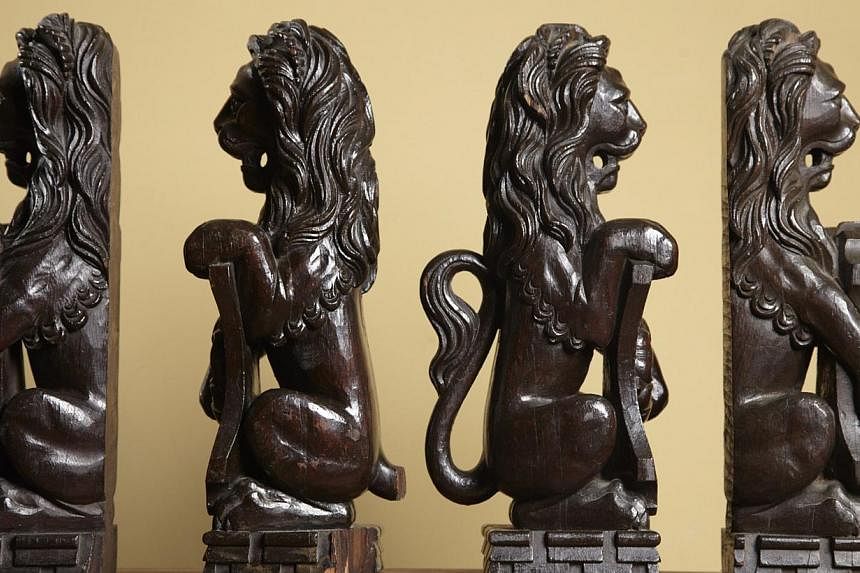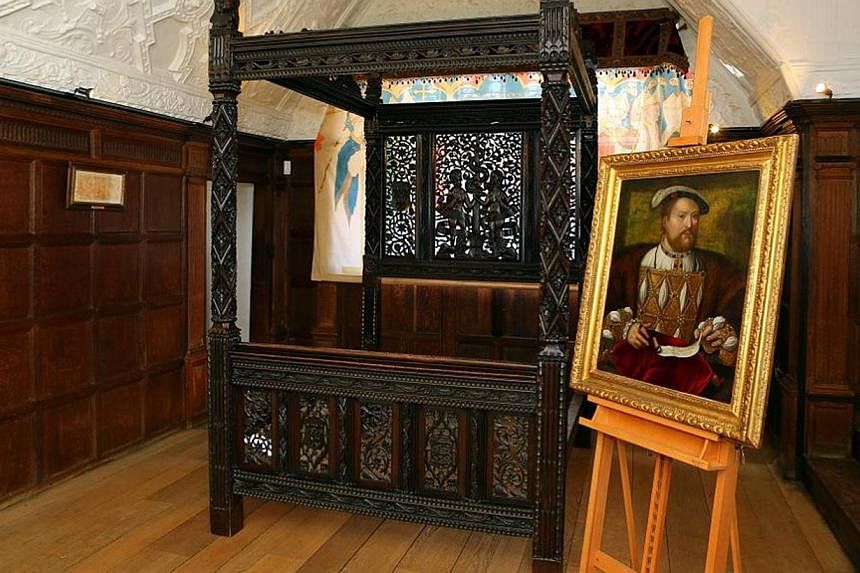A Singapore-based company specialising in testing wood DNA has helped prove that a bed once dumped in a carpark is actually a 500-year-old artefact which could be worth £20 million (S$40 million).
The four-poster bed, which one expert has called England's most important piece of furniture, could even have been where one of its kings, Henry VIII, was conceived.
Located at Science Park Drive, Double Helix Tracking Technologies is in the unique business of checking the origins of commercial timber to, for instance, ensure that the logs come from legal sources and not protected forests.
Then it received a more unusual request from British four-poster bed specialist Ian Coulson.
According to British media, the bed in question had been dismantled and left outside a hotel in Chester before being collected by auctioneers. In 2010, Mr Coulson bought the bed at an auction for £2,200.
Suspecting that it was the only surviving bed belonging to the Tudors, a dynasty which ruled England between 1485 and 1603, he contacted historian Jonathan Foyle to start digging into the item's origins.
Previously, a tree-ring test to date the bed had suggested that it was merely a Victorian reproduction, made with American oak. Unconvinced, Mr Coulson asked the Singapore-based firm to verify the origins of the wood.
DNA samples from the bed were taken and tested at a partner laboratory in Hamburg, Germany.
"Extracting DNA from wood that old is exceedingly challenging, almost as challenging as extracting DNA from a woolly mammoth in the Arctic tundra," said Double Helix Tracking's executive director Jonathan Geach.
With the firm's patented technology, all samples of the wood from the bed were found to have a particular DNA marker proving that the oak was not from North America as previously suggested.
Instead it came from a region stretching from southern France through southern Germany to Belarus. This is the origin of the finest slow-grown oak, imported by mediaeval elites for their furniture, historical records show.
British forensic archaeologist Helen Hughes separately tested 200 surface samples from the bed and detected substances commonly used before 1650. Dr Foyle also studied its ornate biblical carvings and traced them back to the rule of Henry VII in the 15th century.
The royal piece was decorated with special roses representing Henry VII and his wife Elizabeth of York. Its headboard features a beautiful carving of Adam and Eve, representing the couple.
It is likely Henry VIII, who was born in 1491, was conceived on the bed. He played a leading role in one of England's turning points - the move away from the Roman Catholic Church to Protestantism. Dr Foyle said the bed is "arguably the cradle of the English Reformation".
Said Double Helix's director of strategic partnerships Avalyn Lim: "Without DNA verification, the significance of such a monumental piece may not have been discovered, it may have just remained another piece of furniture."
The bed is currently being exhibited at Hever Castle and Gardens in Kent until Nov 22.


